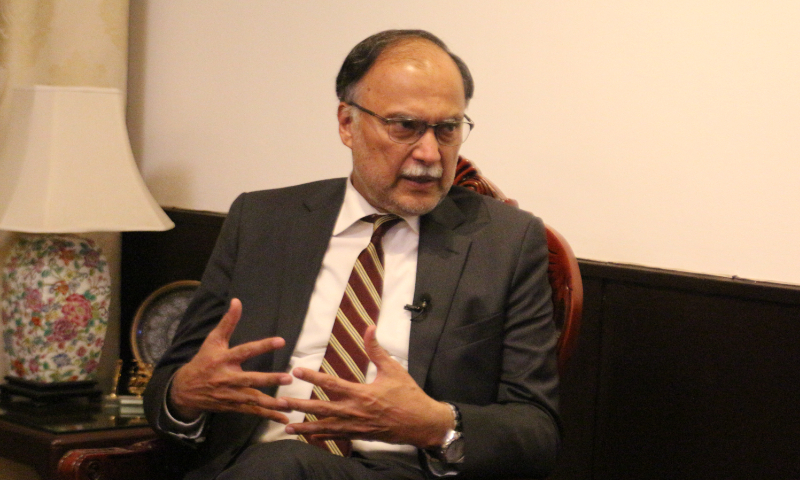Broad, constant growing cooperation between Uzbekistan and China within the BRI confirms both countries’ great promising friendly ties: former Uzbek deputy PM

Editor's Note:
In September 2013, Chinese President Xi Jinping delivered an important speech in Astana, the capital of Kazakhstan, in which he proposed the idea of the "Silk Road Economic Belt." Since then, an initiative that would have a significant impact on the world's development and prosperity has taken root. Over the last decade, the vision of high-quality construction of the China-proposed Belt and Road Initiative (BRI) has achieved substantial and fruitful results in Kazakhstan and across the Central Asia region. Recently, Global Times reporters Lin Xiaoyi and Xia Wenxin (GT) interviewed former Uzbek deputy prime minister and former minister of Foreign Affairs of Uzbekistan Saidmukhtar Saidkasimov (Saidkasimov) in Uzbekistan. The diplomat shared his views on how the BRI and Chinese wisdom have primed Central Asian countries to usher in a new era of development in the past decade.
GT: What were your impressions when you first heard about the concept of "the Silk Road Economic Belt" (the "Belt") and BRI in general? How does Uzbekistan view this initiative?
Saidkasimov: It is no exaggeration to say that the initiative proposed by Chinese President Xi Jinping 10 years ago, generated tremendous interest around the world from the very beginning. It was not only a very bold, but also a hitherto unprecedented large-scale interregional project. What attracted attention to this project, above all, was its practical and applicable orientation, covering all the direct economic interests and benefits of dozens of countries and peoples.
For the first time in history, an unprecedented plan for the formation and development of an interconnected transportation infrastructure across the entire Eurasian continent was presented. Its implementation truly opened up broad prospects for the creation of a fundamentally new transport configuration across the vast expanse of our planet.
Obviously, such an initiative could not go unnoticed at the global level. Indeed, over the last decade, a large number of countries have shown their interest in participating in this ambitious project to create new trade routes, transportation, and economic corridors closely linking the countries of Asia, Europe, and Africa.
Another important goal of the BRI is that it is ultimately aimed at overcoming poverty, social disadvantages, and the enormous development gap in many countries and regions that are breeding grounds for international terrorism, extremism, and illegal migration. All this requires overcoming inequality, domestic stagnation, and stagnation in global economic development.
From the very beginning, Uzbekistan was one of the first countries to highly appreciate and greatly support the BRI for many reasons. On the one hand, the idea of active trade permeates the entire centuries-old history of our region. Uzbekistan and Central Asia in very distant years practically connected trade relations of the whole of Eurasia. On the other hand, geographically, Central Asia has been the center and the main route of the legendary Silk Road for centuries, being a strategically important trade hub.
It is noteworthy that the idea of reuniting hundreds of peoples and countries of Eurasia into a single belt of mutually beneficial cooperation was proclaimed by China, where the Silk Road historically originated. China itself demonstrates to the world a great example of successful social development. In a historically short period, a huge number of Chinese people were able to escape poverty and backwardness and achieved a fairly high level of development. This achievement by the Chinese people is a rare, unique phenomenon in world history.
GT: What impact has the BRI had on Uzbekistan's development over the last decade?
Saidkasimov: Uzbekistan attaches great importance to strengthening cooperation with China for joint development in various areas and constantly measures its plans against the potential of the BRI. A huge number of examples convincingly demonstrate the creative power of the broad, multifaceted, and constantly growing cooperation between Uzbekistan and China within the BRI, confirming the reality and validity of the great promising expectations of our peoples to further strengthen friendly ties.
For many years, China has firmly occupied the position of one of the main economic partners of Uzbekistan. A number of interstate, intergovernmental, and interagency agreements and arrangements create the necessary legal framework for the growing investment cooperation. Projects in industrial cooperation, infrastructure modernization, transport, pharmaceuticals, telecommunications, and the creation of joint industrial parks of high technologies with the participation of companies from both countries have been successfully implemented. The volume of Chinese investments in Uzbekistan's economy in recent years has exceeded $10 billion.
Significant joint projects are being promoted. All four strings of the China-Central Asia gas pipeline pass through the territory of Uzbekistan. The railroad tunnel through Kamchik Pass, the longest in our region, is now operational. The throughput potential of the China-Kyrgyzstan-Uzbekistan (CKU) highway corridor and the railroad is increasingly opening up. Cooperation on the construction of the CKU railway will expand the geography of trade and transportation from China through Uzbekistan to Europe and the Gulf States from the south. It will also transform Uzbekistan from an inland state into an important communications hub in the region.
Uzbekistan, with the help of China, is significantly diversifying export destinations, modernizing infrastructure, and reorienting investment flows to new areas, increasing their potential. China has also become the main exporter of electric cars to Uzbekistan.
Cultural and humanitarian cooperation between the two countries is also actively developing. In this important sphere, joint mass events are increasingly being organized, including art festivals, gala concerts, exhibitions, and seminars. Cooperation is expanding in such areas as student exchanges, translation and publication of literary works, cinematography, translation and broadcasting of television programs, inter-regional contacts, and personnel training, which effectively contribute to the rapprochement of our peoples.
GT: Uzbekistan's President Shavkat Mirziyoyev is expected to visit China to attend the third Belt and Road Forum for International Cooperation in October. What are your expectations from this visit?
Saidkasimov: The upcoming Belt and Road forum is an important event. Undoubtedly, it will cause a huge resonance on a global scale, because it will most likely deal primarily with plans to further expand the transport capabilities of regional and global trade and economic cooperation, in which Uzbekistan is also interested.
It is no coincidence that President Mirziyoyev took an active part and introduced new initiatives at the first Forum in 2017, and at the second in April 2019. There is no doubt that President Mirziyoyev's upcoming visit to China will make a new contribution to the stable and consistent development of the bilateral comprehensive strategic partnership and give a powerful impetus to the further expansion and deepening of Uzbek-Chinese cooperation.
GT: Speaking of the CKU railway, what do you think the three countries can expect from this project?
Saidkasimov: The latest news has shown more positivity. An agreement was signed a year ago and the three countries have already started working on this project. At present, agreements on all technical and financial matters are on a mutually acceptable basis.
This railway, as well as many others, is not a noble gesture by China. All three countries are equally interested in this project. Everyone will benefit from it, be it China, Kyrgyzstan, or Uzbekistan. It is always a great advantage for any country to have a network of good railroads because all countries profit from the opportunity to use them for transportation.
GT: Is Uzbekistan interested in China's development model? What aspects your country is interested in the most?
Saidkasimov: Uzbekistan is very closely following the development of China as a reliable strategic partner. We are increasingly interested in all aspects and spheres of its development. Uzbekistan is studying China's modernization plan because we feel very close to many of China's approaches to solving problems.
Uzbekistan first paid special attention to the development of China's real economy, the improvement of the income distribution system, and ensuring grain security. In addition, the development strategy of President Mirziyoyev emphasizes the development of science and technology. In this regard, China's approach of considering science and technology as the main productive force and innovation as the main driving force of growth is in line with and interesting to us. China's experience in developing high-tech industry is of special interest to our republic.
Uzbekistan will closely follow China's commitment to focus on breakthroughs in advanced technologies while enhancing the resilience and capabilities of industrial and logistics chains in terms of strengthening the foundation for building production capacity and developing its own solution for restructuring international industrial chains, modernizing through stimulus measures in areas such as manufacturing, product quality, aerospace, transport, cyberspace, and digital development.
Second, as President Mirziyoyev has repeatedly noted, Uzbekistan pays special attention to China's experience in achieving inclusive social justice, pulling more and more people out of poverty, and increasing the size of the middle class, thus achieving universal equality in society. China's success in this area is well-known in Uzbekistan. On the initiative of President Mirziyoyev, a special program of cooperation to introduce China's experience in overcoming poverty has been developed and is being actively implemented in our republic. Such rich experience in overcoming the country's historically complex and multidimensional social problems is being carefully studied.
Third, the strategic aspirations of China and Uzbekistan also coincide in the sphere of harmonious coexistence between human and nature. This goal is among the main ones in the long-term program proposed by President Mirziyoyev. As in China, innovativeness, coordination, environmental friendliness, openness and sharing, and the maximum protection of nature and the environment are introduced in this sphere in our republic. The experience of the emerging carbon trading market and clean power generation system, as well as China's willingness to work with other countries to promote the transformation to a clean and low-carbon development model, are also noteworthy.
In general, the policy of President Mirziyoyev, aims at the constant expansion of comprehensive cooperation with China, is immensely fruitful in the most diverse spheres of social development, and has the full support of the people of Uzbekistan.
GT: How has Uzbekistan's attitude toward China changed over the years?
Saidkasimov: In recent years, some top European Union leaders have visited our country. Some of them wanted to create the illusion that "China is dangerous." But Uzbekistan's response was unambiguous and confidently principled that we decide our relations with other countries based on our national interests. That is, no one needs to teach Uzbekistan how to conduct its relations with other countries. And for us, we see only positivity in developing good relations with China.
GT: We know that Uzbekistan has been going through reform in recent years under President Mirziyoyev. Could you please tell us what has changed over the years during this reform?
Saidkasimov: Uzbekistan began to change dramatically after President Mirziyoyev took office. The Uzbekistan before Mirziyoyev and after Mirziyoyev is completely different: Back then, it was a closed state; foreign relations were very limited, even with our four neighbors; we had a completely closed press, freedom of expression was prohibited; and we did not carry out any reforms, neither in the economy nor in other spheres. After Mirziyoyev took office, this all began to change radically.
Many Chinese experts called Mirziyoyev a reformer, indeed the Uzbek Deng Xiaoping. Knowing what a huge role Deng played in the fundamental transformation of Chinese society, I would fully agree with such an assessment.
He knows well the situation and all the problems in Uzbekistan. Now he is pursuing a policy to transform Uzbekistan in all directions to build a "New Uzbekistan."
First of all, in foreign policy, he started to actively develop relations with all friendly countries. Among his main priorities, he made a state visit to China. He also visited European Union countries and the US. We have dramatically increased the number of embassies in other countries. Many other countries also opened their embassies in Tashkent.
In terms of the economy, we see the development of entrepreneurship. All restrictions for both large and small businesses have been removed. The state has begun to provide this influential support, primarily to small and medium-size businesses. In this case, financial support was very well provided, while various benefits were created for entrepreneurs. For the first time, we also opened foreign bank branches. As a result, our GDP per capita has changed noticeably over these seven years.
In general, great changes have taken place in the economy, social life, and cultural development. That is to say, today we can say that Uzbekistan is developing as a modern state in a very free, calm, and even manner.
GT: You founded the University of World Economy and Diplomacy in 1992. What motivated you to create this university?
Saidkasimov: It has more to do with the collapse of the Soviet Union. After the collapse, 15 former republics became independent. The point is that during the Soviet era, only Moscow was in charge of these republics' foreign policy, because the Soviet Union was a unified state, and therefore a unified foreign policy was implemented with the center. Moreover, foreign policy specialists and diplomats were trained only in Moscow.
When we became independent, we had to open an embassy and accept foreign diplomats, but then we found out that Uzbekistan has no specialists or national diplomats. After all, diplomacy is a special sphere of activity that needs its own professionals who defend the national interests. Therefore, having experience in this sphere as a professor in universities in Moscow to prepare diplomats, I felt it necessary to establish such a study institution in Tashkent. Our university was the first of such in the former Soviet Union states. Our university had a special status and requirements, and we selected the strongest trained young people. As a result, everything went successfully, creating a highly professional national corps of Uzbek diplomats. Today, many Uzbek Ambassadors are graduates of this university.








